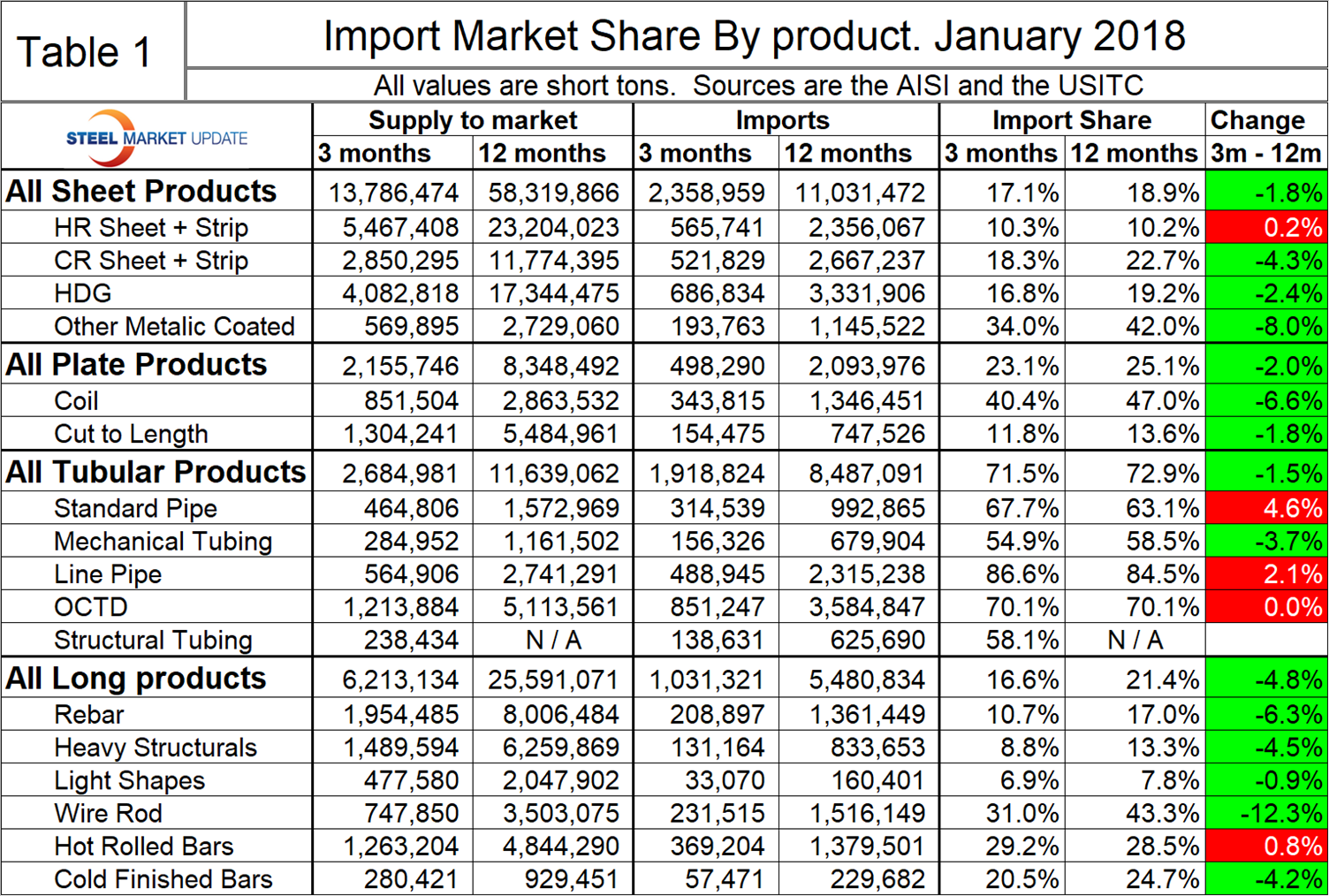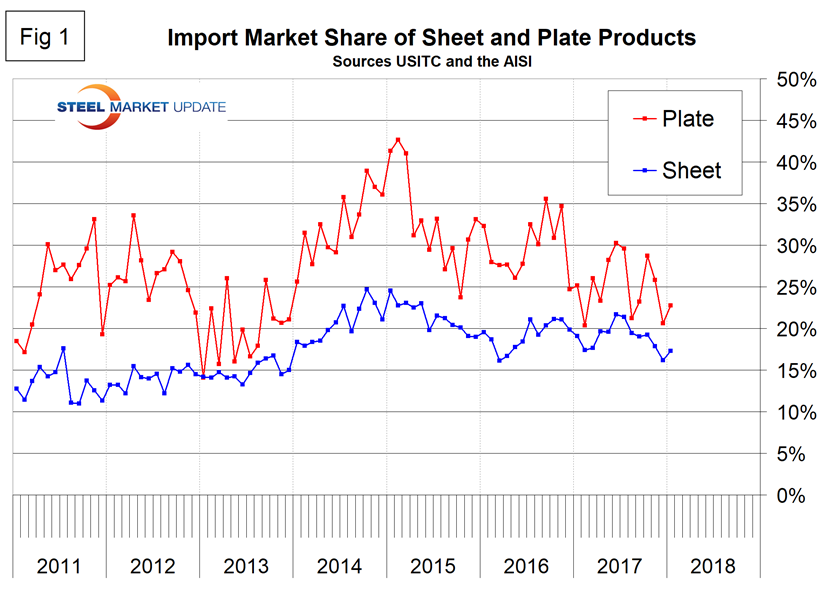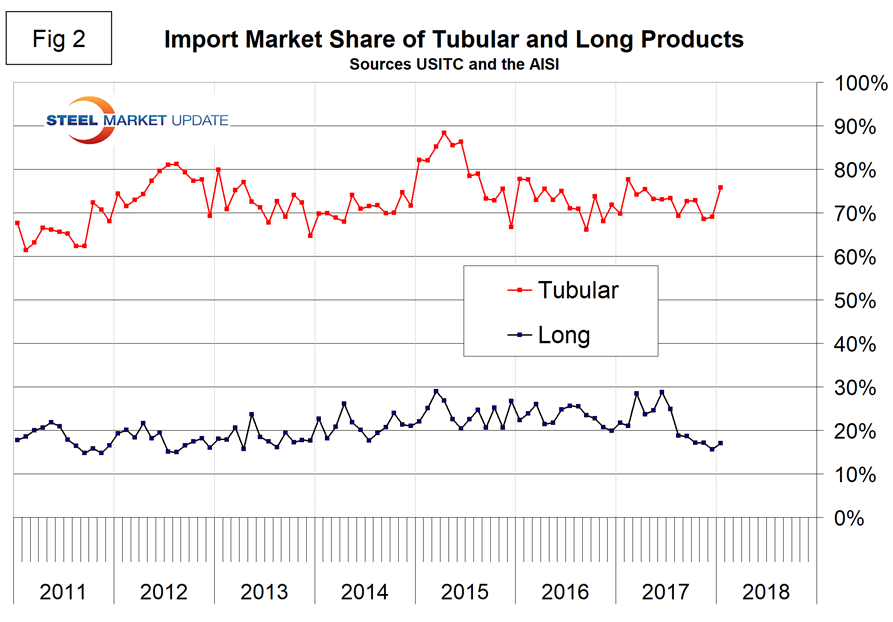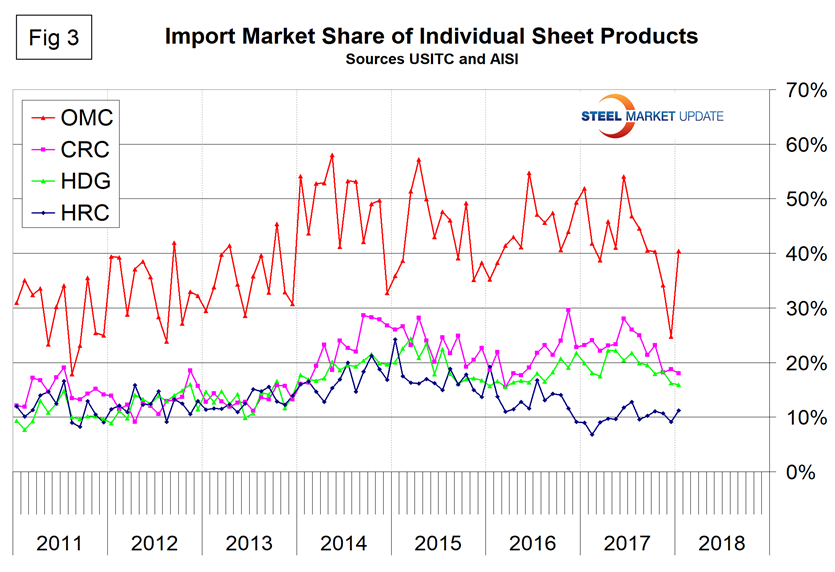SMU Data and Models

New SMU Report Shows Imports Losing Market Share
Written by Peter Wright
March 11, 2018
Imports’ shares of the major steel product markets are all on the decline, reveals a new report on imports from Steel Market Update. The report examines the import share of sheet, plate, long and tubular products and 18 subcategories of these product groups. We think the introduction of this analysis is timely as a way to examine the effects of the Section 232 tariffs going forward.
Table 1 shows total supply to the market in three months through January and in 12 months through January for the four product groups and the 18 subcategories. Supply to the market is the total of domestic mill shipments to domestic locations plus imports. It shows imports on the same three- and 12-month bases and then calculates import market share for the two time periods for 18 products. Finally, it subtracts the 12-month share from the three-month share and color codes the result green or red. If the result of the subtraction is positive, it means that import share is increasing and the code is red. The big picture is that import share is declining for all four product groups: sheet, plate, longs and tubular products.

There is a huge difference in import market share between products with tubular goods being by far the worst case. In the tubular section, the import share of structural tubing is blank because the AISI data prior to March 2017 made no sense and we have not included it.
Figure 1 shows the historical import market share of plate and total sheet products. The import share of both has been decreasing for three years, though more so for plate, which started at a higher level.

Figure 2 shows the same history for tubular and long products and the extreme import level of tubulars.

Figure 3 drills down to show the history of the four major sheet products. Other metallic coated, mainly Galvalume, has had by far the highest import share since our analysis begins in 2011.

This is a work in progress. As we develop it, we will drill down into the subcategories of plate, longs and tubular products. This should be complete for our February analysis.

Peter Wright
Read more from Peter WrightLatest in SMU Data and Models

SMU’s June at a glance
A look at SMU data for the month of June.

SMU Survey: Buyers’ Sentiment rebounds from multi-year low
Both of SMU’s Steel Buyers’ Sentiment Indices edged higher this week. Current Sentiment rebounded from a near five-year low, while Future Sentiment rose to a two-month high

SMU flat-rolled market survey results now available
SMU’s latest steel buyers market survey results are now available on our website to all premium members.

SMU Survey: Sheet lead times pull back after early-June blip, plate holds
Following the uptick seen two weeks ago, lead times eased this week for all four sheet products tracked by SMU, while plate lead times held steady, according to this week’s market survey.

SMU Survey: Pricing power abruptly shifts to steel buyers
The majority of steel buyers responding to our latest market survey say domestic mills are more willing to talk price on sheet and plate products than they were earlier this month. Sheet negotiation rates rebounded across the board compared to early June, while our plate negotiation rate hit a full 100%.
